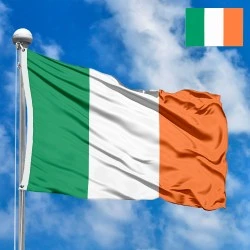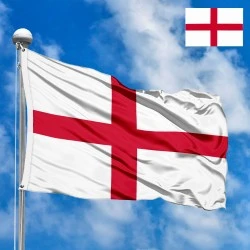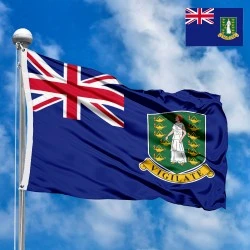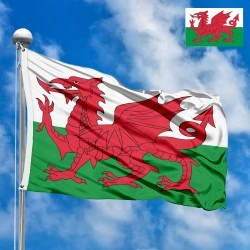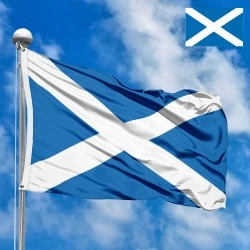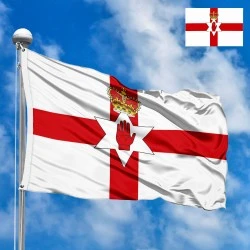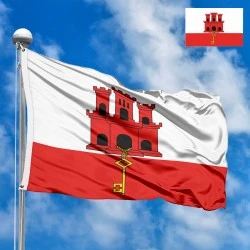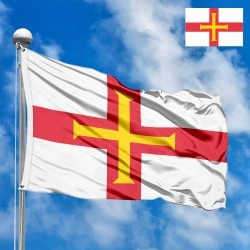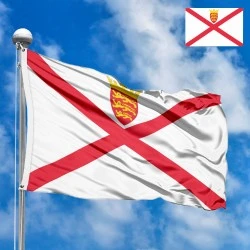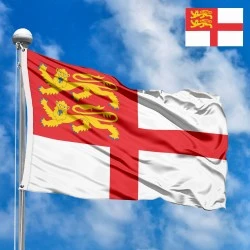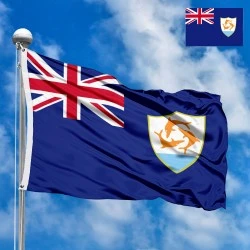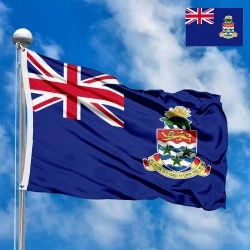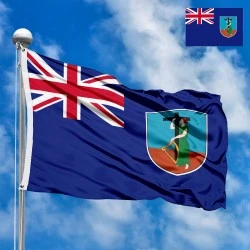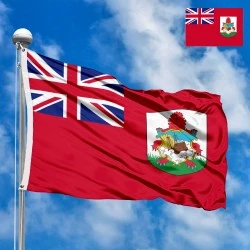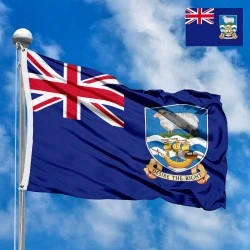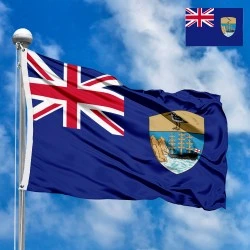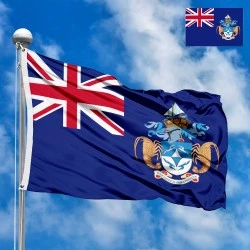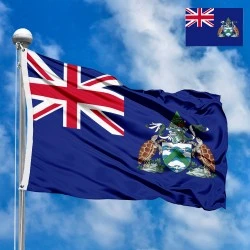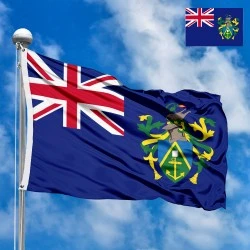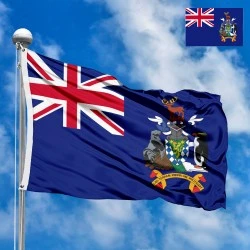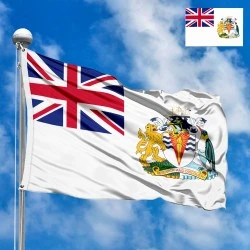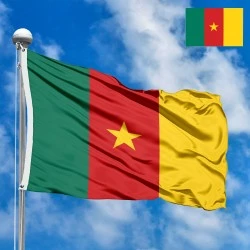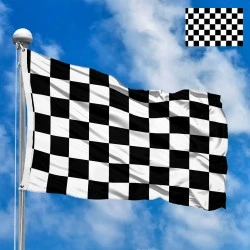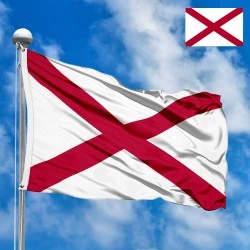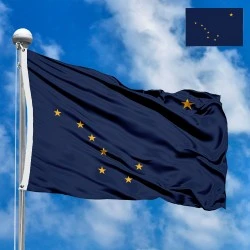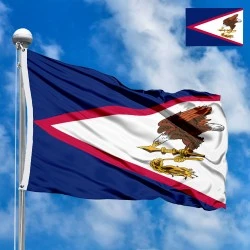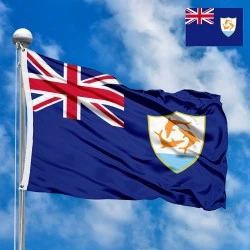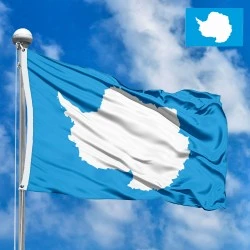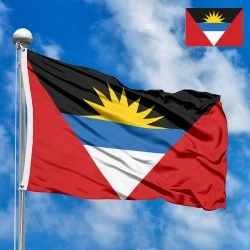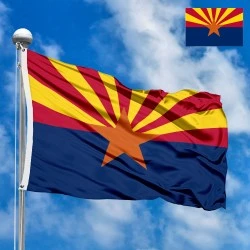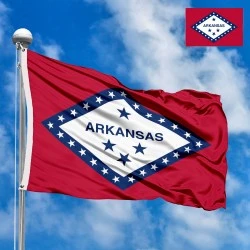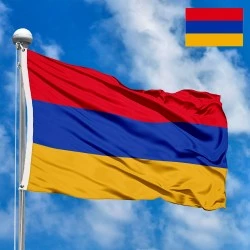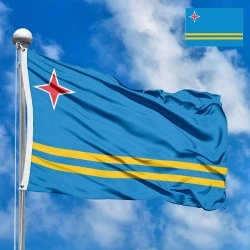Flag of United Kingdom of Great Britain and Northern Ireland (Union Jack)
- Flag Type: State
- Proportions (official): 1:2
- Official name: United Kingdom of Great Britain and Northern Ireland
- Local name: United Kingdom
- Sovereignty (year): YES (1707)
- Member of Organizations: UN, NATO, Commonwealth of Nations, Pacific Community
- Country code, territory: GB, GBR, 826
- Capital: London
- Large cities: Birmingham, Glasgow, Liverpool, Manchester
- Population: 67,991,525 (2024, ONS)
- Religions: Christian ~51%, No religion ~37%, Muslim ~7% etc.
- Area (km²): 243 610
- Highest point: Ben Nevis (1,345 m)
- Lowest point: The Fens (–4 m)
- Currency: Pound sterling (GBP, £)
- Languages: English
- Dialing code: +44
- National domain: .uk
Flag Information
General information
Demography and Culture
Economy and communications
- All Flags
- Flags of Countries by Continent
-
Flags of Organizations
- Flags of UN countries
- Flags of the European Union countries
- Flags of NATO countries
- Flags of the countries of the Organization of Islamic Cooperation
- Flags of the countries of the Organization of American States
- Flags of the Arab League countries
- Flags of the African Union countries
- Flags of the countries of the Union of South American Nations
- Flags of the Commonwealth of Nations
- Flags of the countries of the Secretariat of the Pacific Community
- Flags of the Nordic Council countries
- Flags of the Caribbean Community
- Flags of the countries of the Association of Southeast Asian Nations
- Flags of the East African Community
- Flags of the countries of the Organization of Turkic States
- LGBT Community Flags
- Historical Flags
- Ethnic Flags
- Flags of the USA (states)
Description
The Union Flag, commonly known as the Union Jack, is the national flag of the United Kingdom of Great Britain and Northern Ireland. It is a highly distinctive and globally recognized design, a superimposition of the flags of three constituent countries of the United Kingdom: England (St. George's Cross), Scotland (St. Andrew's Cross), and Northern Ireland (St. Patrick's Cross, representing Ireland). This intricate and historically layered design is a powerful visual representation of the union of these diverse nations under a single sovereign entity, embodying centuries of shared history, political evolution, and cultural heritage.
Dimensions, Colors, and Arrangement of Elements: The design of the Union Jack is a carefully orchestrated blend of crosses, each representing a patron saint of a kingdom.
-
The flag features a dark blue field.
-
Superimposed on this field are three crosses:
-
The red cross of St. George (England): A bold red cross (a vertical and horizontal bar) on a white fimbriation (a thin white border) that sits centrally on the flag. This cross is the most prominent element.
-
The white saltire of St. Andrew (Scotland): A white diagonal cross (a saltire) on the blue field. This cross originates from the flag of Scotland.
-
The red saltire of St. Patrick (Ireland): A red diagonal cross (a saltire) superimposed on the white saltire of St. Andrew, also with a thin white fimbriation. This cross represents Ireland, specifically Northern Ireland, as it remains part of the UK.
-
-
The proportions (aspect ratio) of the flag are typically 1:2 for naval use, and 3:5 for land use. The design ensures that each cross is distinctly visible and correctly oriented, preventing any single cross from dominating disproportionately.
-
The colors are specific shades:
-
Blue: A dark navy blue, symbolizing the deep seas surrounding the British Isles and representing steadfastness and loyalty. It is the background color derived from the Scottish flag.
-
Red: A vibrant red, embodying courage, strength, and valor. This color is used for both St. George's Cross and St. Patrick's Cross.
-
White: Represents peace, purity, and honesty. It forms the fimbriation for the red crosses and the main body of St. Andrew's Cross. The arrangement of the saltires (diagonal crosses) is specifically counter-changed (asymmetrical) to avoid any perception that St. Patrick's Cross is merely a red line on St. Andrew's white cross. This subtle but crucial detail ensures that both Scotland and Ireland are represented with equal prominence in the diagonal elements.
-
History of the Flag's Creation and Adoption: The Union Flag is a composite symbol, born out of historical acts of union between the kingdoms that comprise the United Kingdom. Its evolution reflects the gradual political amalgamation of these territories.
-
1606: First Union Flag (England and Scotland): The first Union Flag was created by order of King James VI of Scotland and I of England following the Union of the Crowns in 1603. James, wishing to symbolize the new personal union, decreed that the flag would be the red cross of St. George (England) superimposed on the white saltire of St. Andrew (Scotland), on a blue field. This flag was primarily for maritime use. It did not fully replace the individual flags of England and Scotland on land.
-
1707: Act of Union (Great Britain): With the Acts of Union in 1707, which formally merged the Kingdom of England and the Kingdom of Scotland into the Kingdom of Great Britain, the 1606 Union Flag was adopted as the official national flag of Great Britain.
-
1801: Second (Current) Union Flag (United Kingdom): The current design of the Union Flag was adopted in 1801 following the Act of Union 1800, which united the Kingdom of Great Britain and the Kingdom of Ireland to form the United Kingdom of Great Britain and Ireland. To incorporate Ireland into the flag, the red saltire of St. Patrick was added. This red saltire was laid over the white saltire of St. Andrew in a specific, counter-changed manner to give both prominence and avoid obscuring St. Andrew's Cross entirely. The white fimbriation around St. George's Cross and St. Patrick's Cross serves to separate the red from the blue, adhering to the heraldic rule of tinctures (metal on color or color on metal).
-
20th Century and Beyond: Despite the secession of most of Ireland in 1922 to form the Irish Free State (now the Republic of Ireland), the Union Flag's design remained unchanged, as Northern Ireland continued to be part of the United Kingdom. This flag has since flown as the national symbol of the United Kingdom and its remaining overseas territories.
Symbolism and Meaning for Residents: For the people of the United Kingdom, the Union Jack holds multifaceted symbolism, representing a complex tapestry of national identity, heritage, and the global legacy of the British Empire.
-
Unity of Nations: Fundamentally, the flag symbolizes the union of the constituent nations – England, Scotland, Wales (though Wales's dragon flag is not explicitly incorporated into the Union Jack, its status is represented by England's inclusion), and Northern Ireland – under a single crown and government.
-
Monarchy and Tradition: It is inextricably linked to the British monarchy, a continuous line of sovereignty and a cornerstone of the UK's constitutional framework. The flag embodies centuries of history, tradition, and parliamentary democracy.
-
Global Influence and History: For many, the Union Jack evokes the historical global influence of the British Empire and its legacy, including the Commonwealth of Nations. It represents a past era of power, exploration, and cultural dissemination, though this aspect is viewed with increasing complexity and critical reflection in modern times.
-
Resilience and Identity: In times of national celebration or crisis, the flag becomes a potent symbol of national resilience, solidarity, and collective identity. It represents shared values, a common language (English), and a unique cultural heritage.
-
"Britishness": The flag is a visual shorthand for "Britishness", encompassing a sense of shared belonging for citizens of the UK, regardless of their specific regional background. It can evoke feelings of pride in democratic institutions, diverse culture, and contributions to global society.
-
Cultural Icon: Beyond its official governmental use, the Union Jack has become a cultural icon, appearing in fashion, art, and popular culture worldwide, often detached from its political implications.
Interesting Facts: The Union Flag, or Union Jack, has a fascinating history and a number of intriguing aspects.
-
"Union Flag" vs. "Union Jack": While officially known as the "Union Flag" when flown on land, it is almost universally called the "Union Jack." The term "Jack" traditionally referred to flags flown on a ship's jackstaff (a small mast at the bow). However, its common usage now applies regardless of location.
-
No Welsh Representation: A common point of discussion is the absence of a direct representation for Wales on the Union Jack. This is because Wales was already incorporated into the Kingdom of England by the time the first Union Flag was created in 1606, and therefore its separate patron saint's flag (St. David's Cross, or the Welsh Dragon) was not added.
-
Heraldic Rule of Tinctures: The white fimbriation (border) around the red crosses of St. George and St. Patrick is not just for aesthetic appeal; it serves an important heraldic purpose. It prevents the "color" red from directly touching the "color" blue, adhering to the rule that "metal" (gold/yellow or silver/white) should separate two "colors" or vice-versa.
-
Controversial History: The St. Patrick's Cross (red saltire on white) is sometimes seen as a controversial inclusion. While it represents Ireland, its origins are associated with the Order of St. Patrick, an Anglo-Irish order of chivalry, and not necessarily an ancient Irish symbol universally recognized by all Irish people.
-
Design is Asymmetrical: The diagonal red stripes (St. Patrick's Cross) are offset or "counter-changed." This means the red stripes are not centrally aligned over the white stripes (St. Andrew's Cross) but are slightly rotated. This asymmetry is intentional, ensuring that neither Scottish nor Irish symbols appear to be completely "under" the other.
-
Multiple Proportions: The Union Jack has two official proportions: 1:2 for naval use (e.g., on Royal Navy ships) and 3:5 for use on land by government departments. However, 1:2 is often seen more widely.
-
Royal Banner: The Union Jack is the national flag, distinct from the Royal Standard, which is the personal flag of the monarch and is only flown when the monarch is present.
-
Flag on Other Flags: The Union Jack appears in the canton (upper hoist corner) of the flags of several Commonwealth realms and British Overseas Territories, signifying their historical ties to the UK (e.g., Australia, New Zealand, Fiji, Tuvalu).
-
Rare Civilian Display (historically): Historically, flying the Union Jack by private citizens in the UK was less common than in some other nations, often associated with specific events or official buildings. However, this has become more prevalent in recent decades, particularly during major sporting events or royal occasions.
-
Symbol of Cool Britannia: In the 1990s, the Union Jack experienced a resurgence as a fashion and pop culture symbol during the "Cool Britannia" era, often stylized and used by designers and musicians, independent of its political connotations.
In the demonstration images, full-size flags are shown with proportions of 2:3, and hand-held flags with proportions of 1:2.
Color
| COLOR | PANTONE | CMYK | RGB | HEX |
|---|---|---|---|---|
| 280 C | 100-85-5-22 | 1-33-105 | #012169 | |
| 186 C | 2-100-85-6 | 200-16-46 | #C8102E | |
| White | 0-0-0-0 | 255-255-255 | #FFFFFF |
Donation
Download
Completely free for commercial and non-commercial use (public domain).
You can freely use them in your news magazines, websites, software, mobile applications.
We appreciate a backlink to https://flagssite.com
Vector files - Flag of United Kingdom of Great Britain and Northern Ireland (Union Jack) (PDF, EPS, SVG, AI)
- .pdf, .eps, .svg, .ai format; RGB color model; Official Proportions.
"30" - image size (by height) in Pixels (px).
!!! For resizing, use the Latin (eng) keyboard layout.
<img src="https://flagssite.com/flags/00svg/20209.svg" height="30" alt="Flag of United Kingdom of Great Britain and Northern Ireland (Union Jack)">
 Vector files 2:3, 1:2
Vector files 2:3, 1:2
- PDF format; RGB, PANTONE/CMYK color model; aspect ratio - 2:3, 1:2.
Raster files - Flag of United Kingdom of Great Britain and Northern Ireland (Union Jack) (PNG, JPG)
 Waving flag
Waving flag
- PNG format (transparent background), 72dpi, dimensions in Pixels (px), aspect ratio 3:4.
- 15х20 px
- 30х40 px
- 60х80 px
- 120x160 px
- 240x320 px
 Sizes:
Sizes:
"v15" - image size (by height); if necessary, replace with available: v15, v30, v60, v120, v240.
!!! For resizing, use the Latin (eng) keyboard layout.
<img src="https://flagssite.com/flags/v15/20209.png" alt="Flag of United Kingdom of Great Britain and Northern Ireland (Union Jack)">
 Round flag
Round flag
- PNG format (transparent background), 72dpi, dimensions in Pixels (px), aspect ratio 1:1.
"d15" - image size (diameter); if necessary, replace with available: d15, d30, d60, d120, d240.
!!! For resizing, use the Latin (eng) keyboard layout.
<img src="https://flagssite.com/flags/d15/20209.png" alt="Flag of United Kingdom of Great Britain and Northern Ireland (Union Jack)">
 Rectangular flag 2:3
Rectangular flag 2:3
- JPG format, 72dpi, dimensions in Pixels (px), aspect ratio 2:3.
"h30" - image size (by height); if necessary, replace with available: h15, h30, h60, h120, h240, h360, h480.
!!! For resizing, use the Latin (eng) keyboard layout.
<img src="https://flagssite.com/flags/h30/20209.jpg" alt="Flag of United Kingdom of Great Britain and Northern Ireland (Union Jack)">


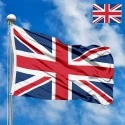
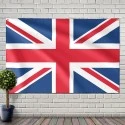
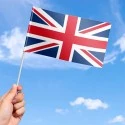




 Sizes:
Sizes:
 Sizes:
Sizes:
